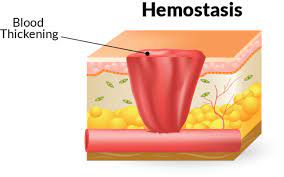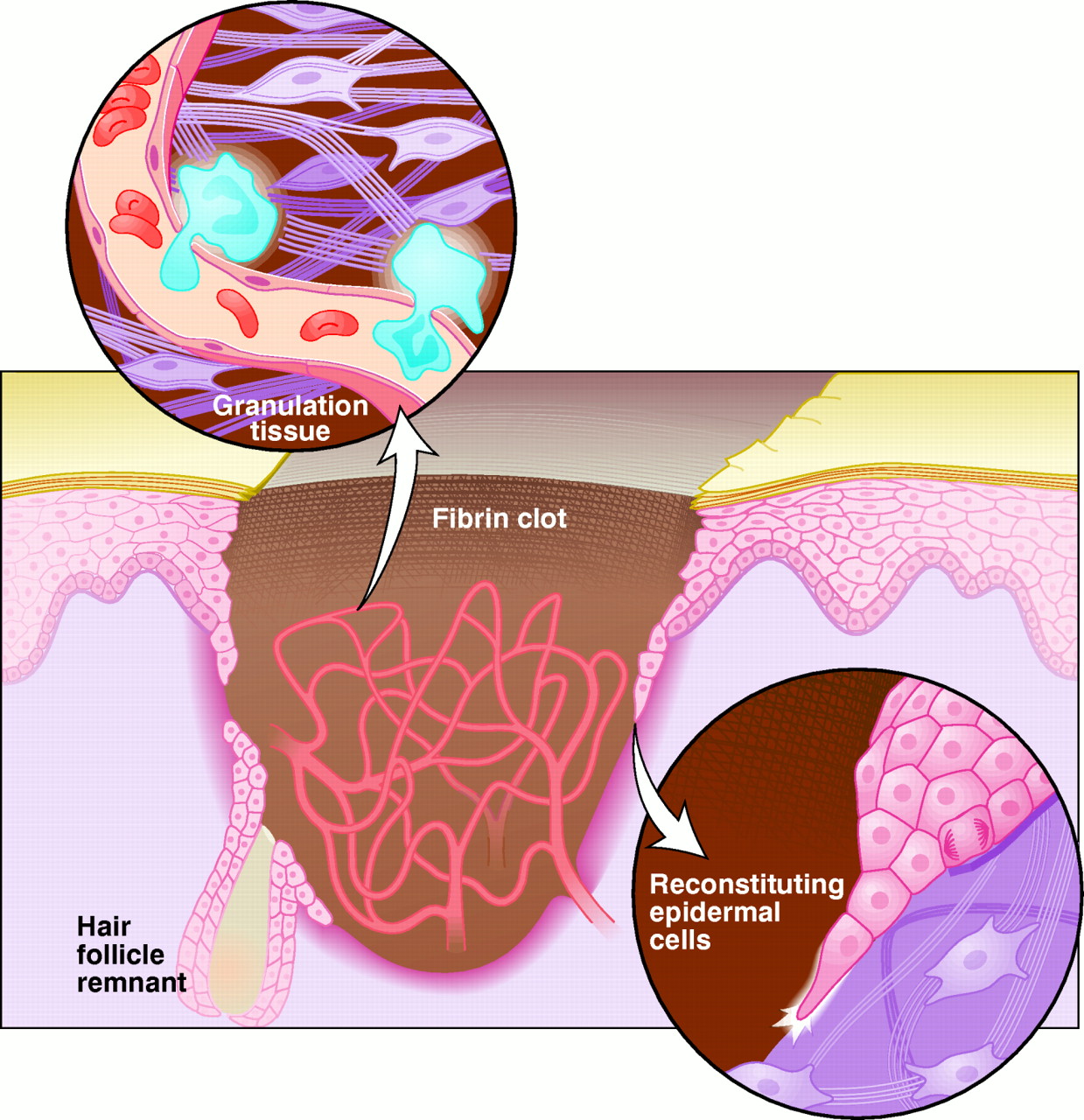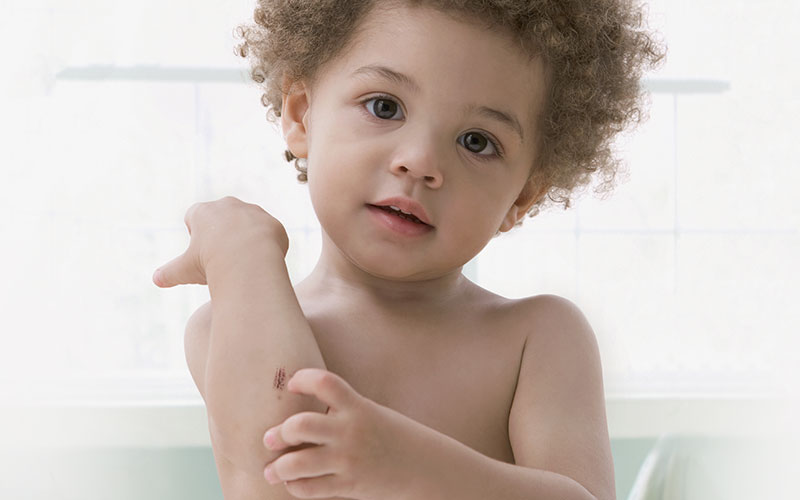A wound is a break in the skin or other body tissues. Examples of wounds are cuts, bruises, burns, fractures, sprains, and animal bites. You could easily get injured when cooking, cleaning, or gardening. Your child can also injure themselves by falling down while playing. After an injury, a doctor and a nurse give us medical treatment and advice. Have you ever wondered what happens in your body during the wound healing process? If so, here are the four stages of wound healing that you will be delighted to learn about.
Hemostasis Phase
Hemostasis is the process during which the wound closes by blood clotting. The first step of hemostasis is when veins near the wound constrict to decrease the bleeding. Next, tinier blood cells, called platelets, stick together in the form of a plug in order to seal the break in the wall of the vein. Finally, coagulation occurs and reinforces the platelet plug with threads of fibrin which further binds leaking blood cells together. The hemostasis stage of wound healing happens very quickly, in about sixty seconds. Blood oozing out of the cut becomes thicker as coagulation factors start working. Then there is the formation of a blood clot, also called a thrombus, which keeps the blood cells trapped in the wound area.

Inflammatory Phase
Inflammation is the second stage of wound healing and it begins right after the injury causing localized swelling. Inflammation both controls bleeding and prevents infection. The inflammation fluid accumulation allows healing and repair cells to move to the site of the wound. Also, during the inflammatory phase, damaged cells and bacteria are removed from the wound area. The white blood cells, growth factors, nutrients, and enzymes accumulate to create swelling, heat, pain, and redness, commonly seen during this stage of wound healing. Hence, inflammation is a natural part of the wound healing process. This particular phase was very painful for me, recently, when I got my left ankle sprained and swollen!

Proliferative Phase
The proliferative phase of wound healing is when the wound is rebuilt with new tissue also called granulation tissue. In this phase, the wound contracts as new tissues are built. In addition, a new network of blood vessels is constructed so that the granulation tissue can be healthy by receiving sufficient oxygen and nutrients. In healthy stages of wound healing, granulation tissue is pink or red and uneven in texture. Moreover, healthy newly formed tissue does not bleed easily. However, dark granulation tissue can be a sign of infection or poor perfusion. In the final phase of the proliferative stage of wound healing, epithelial cells cover the surface of the wound. It is important to remember that epithelialization happens faster when wounds are kept moist and hydrated. Generally, when occlusive dressings are applied within 48 hours after injury, they will maintain correct tissue humidity to optimize epithelialization.

Maturation Phase
The remodeling stage of wound healing, also called, the maturation phase is when collagen is remodeled and the wound fully closes. Also, the cells that had been used to repair the wound but which are no longer needed are removed by programmed cell death. As you have been told earlier, during the proliferative phase, the wound is thick and has a rough texture. Hence, during the maturation phase, collagen is aligned tightly along lines, and water is reabsorbed in order to reduce scar thickness and also make the skin area of the wound stronger. Generally, remodeling begins about 21 days after an injury and can continue for a year or more.

The stages of wound healing are complex and fragile processes. Failure to progress in the stages of wound healing can lead to wound infections. Factors that lead up to infections are venous disease, diabetes, and metabolic deficiencies of the elderly. Careful wound care by keeping wounds moist, clean, and protected from reinjury and infection can incredibly speed up the stages of wound healing. So, how does it feel to be aware of the healing that happens inside your body? It is so fascinating to realize how intelligent our body is!
Please do not forget to share your own experiences and comments below!



Pingback: Nutrients For Bone And Muscle Recovery – Hello sites